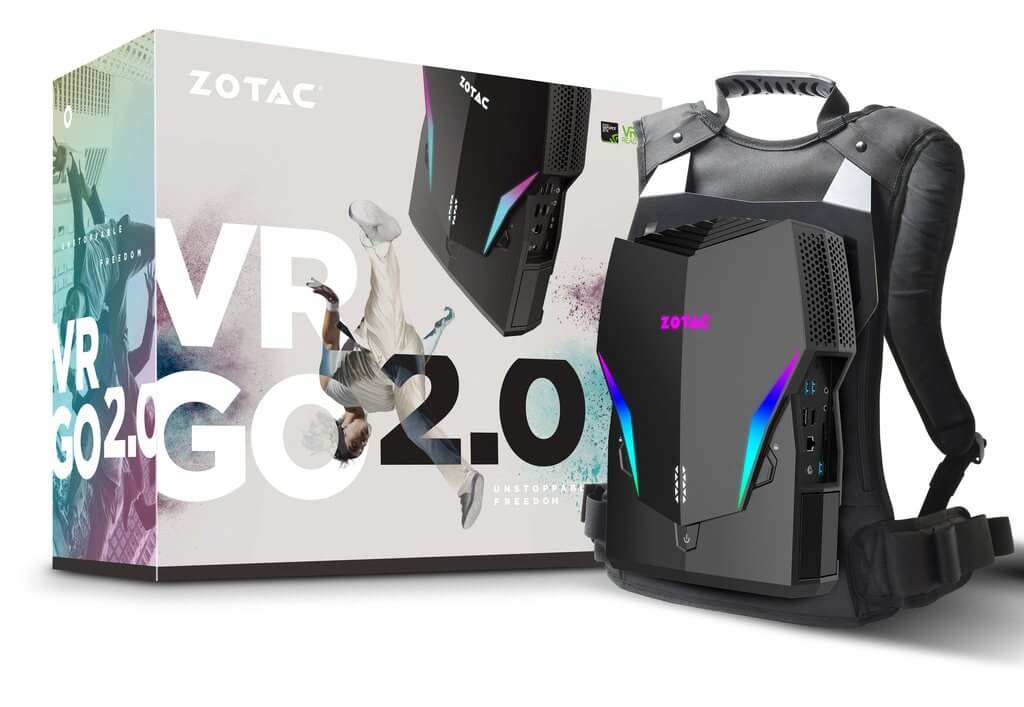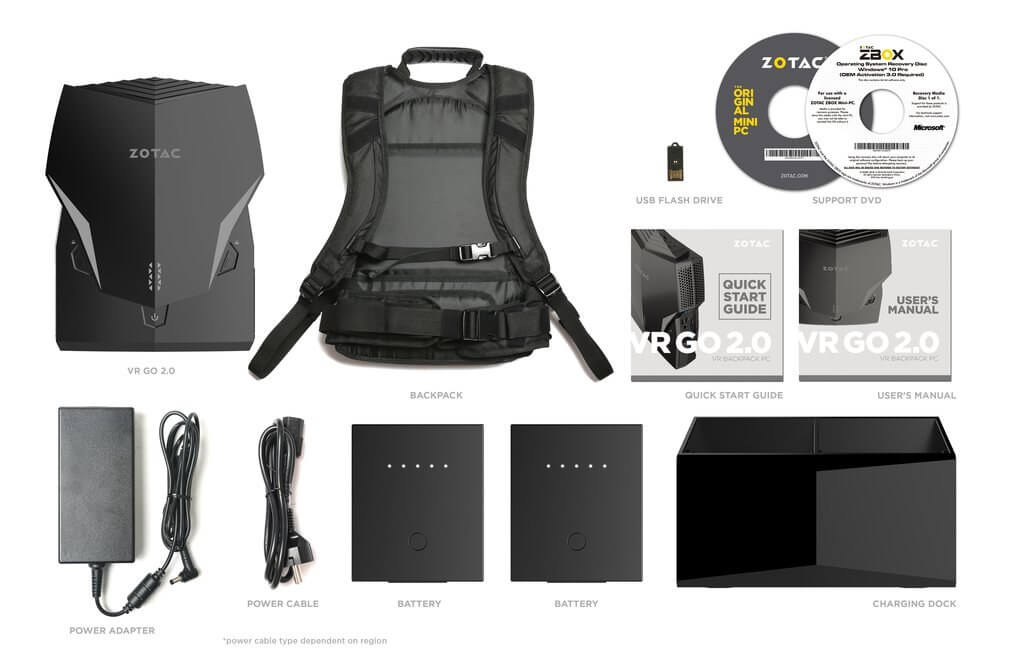In brief: While virtual reality still hasn't taken off in the way that many expected, making systems more portable and reducing the risk of falling over wires may increase its popularity. For those interested in PC-based VR on the move, Zotac has upgraded its VR Go backpack with some new hardware and features.
Zotac was one of several companies to unveil a VR backpack in 2016. While the revamped VR Go 2.0 retains the GTX 1070 graphics card, the previous Skylake Intel Core i7-6700T has now been upgraded to a six-core Coffee Lake Intel Core i7-8700T---enough power to run an Oculus Rift or HTC Vive. It also comes with 16GB of DDR4 RAM and a 240GB M.2 SATA solid state drive with room to add an extra 2.5-inch drive.
As you might expect, the VR GO 2.0 is packed with connectivity options, including six USB 3.0 ports, a USB 3.1 Type-C port, 802.11ac Wi-Fi, Bluetooth 5, Gigabit LAN, two HDMI 2.0 ports, and a DisplayPort 1.4 port. It also comes with two hot-swappable 6000mAh batteries, which the company says will allow up to 1.5 hours of playtime---though that's down from the previous version's 2 hours.
It's not just the hardware that's been upgraded; the backpack is now smaller and lighter with a more even weight distribution, and it comes with extra foam padding on the back support and shoulder straps. There's also "an extended length back support," which keeps the unit further away from a user's back to improved ventilation and comfort, and, like so many PC accessories these days, it features RGB lighting.
In a hands-on session, TechRadar says the VR GO 2.0 is noticeably smaller and more comfortable to wear than its bulky predecessor, but whether that's worth the compromise to battery life is uncertain. No word yet on availability or price, but it'll certainly cost more than the $300 Vive wireless adaptor.

